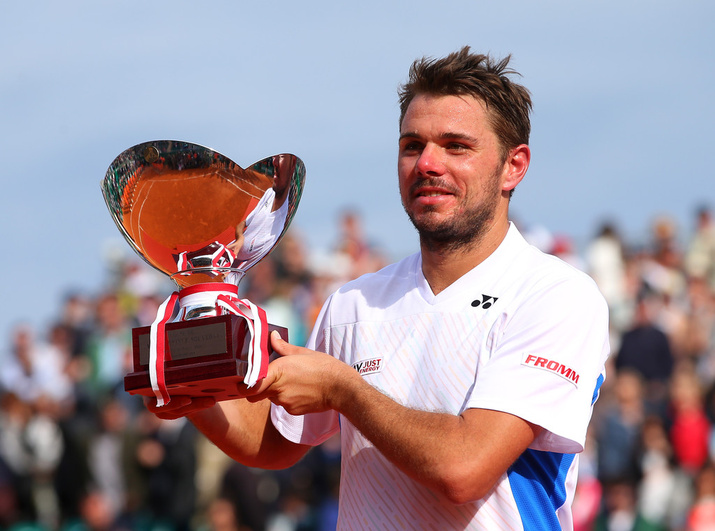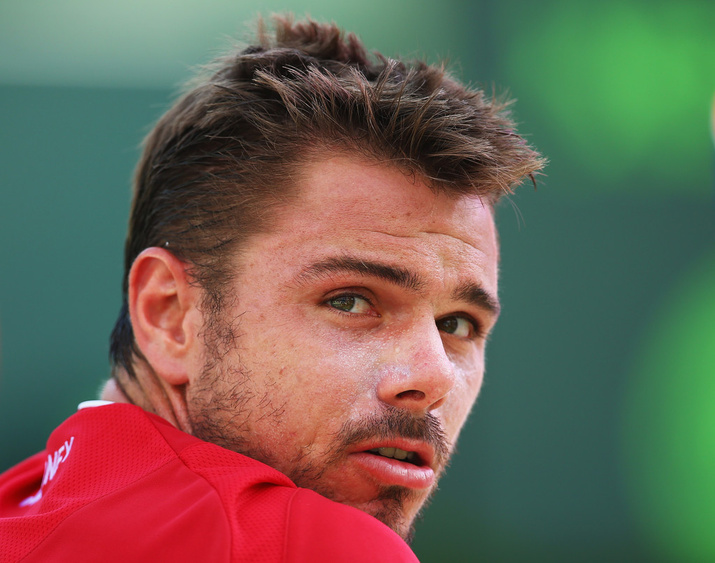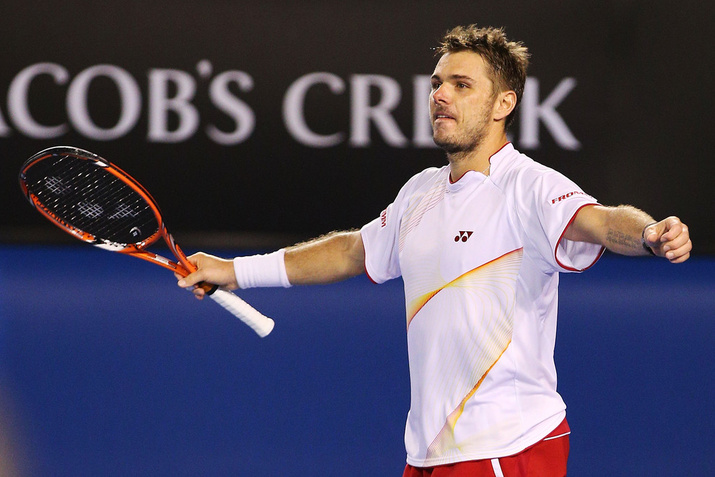Don't miss any stories → Follow Tennis View
FollowDissecting Stanislas Wawrinka's Ebbs and Flows
After winning his maiden Grand Slam title at the Australian Open, Stanislas Wawrinka took the tennis world by storm once again in Monte Carlo. There, he won the title by defeating his countryman Roger Federer.

Wawrinka had entered the Australian Open having not defeated Djokovic in nearly eight years and having never even won a set off Rafael Nadal. To say that his victories over Djokovic and Nadal in Melbourne were shocking would be the understatement of the century. Moving forward to the red dirt of Monte Carlo, Wawrinka entered his first Masters Series 1000 final with a 1-13 record against Federer, the man who has overshadowed him his entire career. After dropping a tight first set, Wawrinka won the second set in a tiebreak before dominating Federer in the third set.
It would seem as if Wawrinka has absolutely no intentions of ceding his newly cemented status at the top of men’s tennis, but we shouldn’t expect a year filled with endless Wawrinka victories. Not even Wawrinka does, surely. There is no doubt that he will be a contender in almost every event he enters, but he won’t be etching his name on the trophy at the start of any event.
This has to do large in part with Wawrinka’s play following his victory down under. After winning the Australian Open, Wawrinka fell into a bit of a funk. In Indian Wells, Wawrinka was sent home packing in the round of 16 by Kevin Anderson. In Miami, Wawrinka experienced yet another setback by losing to the in-form Alexandr Dolgopolov in three sets.
These defeats, while not overly shocking, were concerning because they represented a dramatic reduction in level of play from what we witnessed in the Australian Open. If Wawrinka was at his Australian Open level in Indian Wells and Miami, Kevin Anderson and Alexandr Dolgopolov would have been sent packing.
Things got even worse for Wawrinka during Davis Cup. Playing in front of his home fans in Switzerland, Wawrinka was dealt a shocking defeat at the hands of Andrey Golubev of Kazakhstan. The next day, Wawrinka teamed up with Federer in doubles, only to fall short once again to Golubev and Oleksandr Nedovyesov. The Swiss picked up the pieces in his final match of the tie by defeating Mikhail Kukushkin in four sets.

So, to sum up Wawrinka’s year, he’s played three excellent tournaments (titles in Chennai, Australian Open, and Monte Carlo), two mediocre tournaments (Indian Wells and Miami), and one poor tournament (Davis Cup).
Wawrinka deserves the benefit of the doubt for his post-Australian Open slump. He had just come off the biggest victory of his career and could not have prepared himself for the attention he subsequently received. Once Davis Cup rolled around, however, it seemed logical that Wawrinka would have restored his Australian Open form. Clearly, he did not, and this type of performance is the main area of concern for him moving forward.
While it’s illogical to criticize Wawrinka too harshly on the basis of one weekend of tennis, especially considering his turnaround in Monte Carlo, it’s definitely not worth ignoring. If Wawrinka expects to keep competing for majors and Masters Series 1000 crowns, he’ll have to do whatever he can to avoid these types of troughs. Looking at Federer and Nadal, it is evident that in their primes, there was no letting up. Between 2004 and 2006, Federer lost only 15 matches. Between 2008 and 2010, Nadal lost only 35 matches. There were no gaps in their level of play.
It would be unfair to hold Wawrinka to the same expectations as Federer and Nadal. But the world No. 3 knows that if he can maintain his highest level of play throughout the duration of the season, he’ll be seen as a primary threat in every major event. By establishing their dominance so relentlessly, Federer, Nadal and Novak Djokovic come into majors with few vulnerabilities and few opponents believing they have a chance to beat them. If Wawrinka continues to sporadically throw in clunkers, his opponents will feel better about their chances of beating him.
With all of this in mind, there are also positives to take from Wawrinka’s up and down stretch. After his poor Davis Cup performance, it was unclear what he was going to bring to the table in Monte Carlo. Less than an hour into his first match there against Marin Cilic, any skepticism was immediately eradicated. Amazingly, Wawrinka only needed 45 minutes to demolish the highly dangerous Croat 6-0 6-2. Wawrinka carried this form through the rest of the tournament, beating Milos Raonic in straight sets, David Ferrer in straight sets, and beating Roger Federer in three sets, the last two of which Wawrinka controlled.

The perseverance and fortitude Wawrinka displayed in Monte Carlo was the same type of mental grit that allowed him to overcome his staggering head-to-head deficits against Djokovic and Nadal in Australia. The victory over Djokovic was especially impressive considering the fifth-set heartbreaks that Wawrinka suffered at the hands of the Serb at two majors in 2013.
Tennis fans have been waiting for someone to break the dominance of the Big Four for quite some time. In 2009, many thought Del Potro might be that man. Unfortunately, injury and inconsistency have hindered Del Potro’s progress. Some thought we might have to wait even a few more years for someone to break through.
With Wawrinka’s start to 2014, it appears as if Stanislas Wawrinka is ready to be that man.










